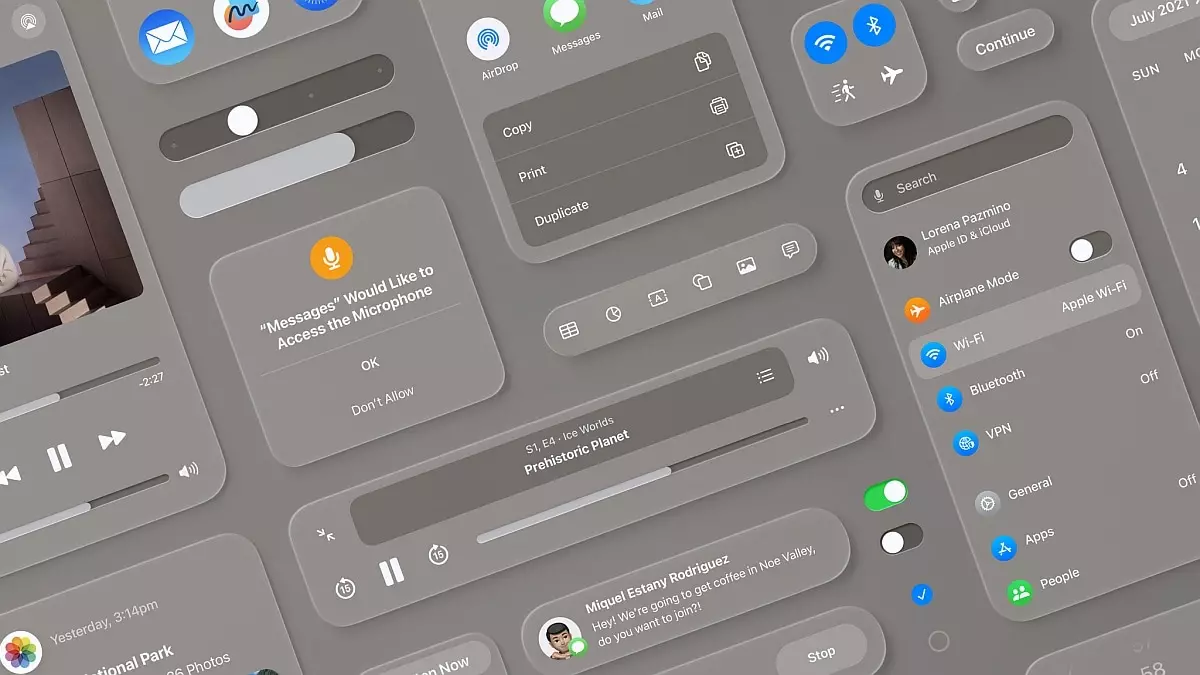Innovation is the lifeblood of technology, and Apple, despite its status as a towering giant in the industry, has often returned to the drawing board only when the winds of competition begin to howl. Reports suggest that Apple is gearing up for a seismic shift in its operating systems—iOS 19, iPadOS 19, and macOS 16 are allegedly set for their most dramatic redesigns in over a decade. While the changes may be aimed at streamlining user operation, they come at a crucial time when consumer expectations are skyrocketing. Apple must not only keep pace with competitors, but leapfrog them, lest it fade into obscurity.
Aesthetic Transformation: The VisionOS Influence
An expected feature of these new operating systems is a distinctive overhaul in design elements. Inspired by visionOS, the new interfaces are rumored to include round app icons and streamlined menus, reinvigorating a somewhat antiquated aesthetic that has persisted for years. This intentional shift epitomizes a radical departure from traditional design paradigms; however, we must question whether a superficial aesthetic upgrade will genuinely enhance usability. A fresh coat of paint on an outdated structure may initially dazzle but could ultimately lead to user disillusionment if it lacks substantive improvements.
Marketing Mastery: A Tactic for Upgrades
Apple’s strategy appears to frame this overhaul not just as a redesign but as a modern push towards getting users to upgrade from older devices. Historically, the company has masterfully combined hardware and software launches, creating an ecosystem that makes immigration to the latest iteration almost inevitable. Yet, one must wonder: is this truly in the users’ best interest, or simply a shrewd tactic engineered to boost sales? The loyal Apple user base, often touted as the company’s strength, should be encouraged to embrace progress solely through necessity, not by design manipulation.
A Historical Context of Unrealized Expectations
The history of Apple’s rollouts provides fertile ground for skepticism. Just last year, expectations were high for iOS 18, but users were left cold after the anticipated interface changes never materialized. It’s as if Apple has developed a habit of formulating grand promises while delivering lackluster outcomes. Will Apple repeat this cycle of inflated expectations and eventual underwhelming performance? Users are right to maintain caution. The prospect feels like a double-edged sword—innovation on the horizon could either restore Apple’s vision or once again come up short.
The Road to WWDC: A Collective Anticipation
As we approach the annual Worldwide Developers Conference in June, the excitement surrounding the upcoming software updates is palpable. However, one must remain grounded in realism. The fervor around potential advancements should not overshadow critical thinking about usability, accessibility, and whether these updates will benefit all users or merely cater to the tech elite. Is Apple genuinely committed to creating inclusive technology, or are we gearing up for another round of exclusivity wrapped in an appealing package?
It’s time for Apple to not just listen but respond to the chorus of voices eager for true innovation, rather than just a refreshing of familiar confines. As they prepare for this momentous shift, the clock is ticking—users await genuine enhancement over mere cosmetic change. Only time will reveal whether these anticipated updates will prove to be a commendable evolution or just another chapter in the saga of missed opportunities.


Leave a Reply